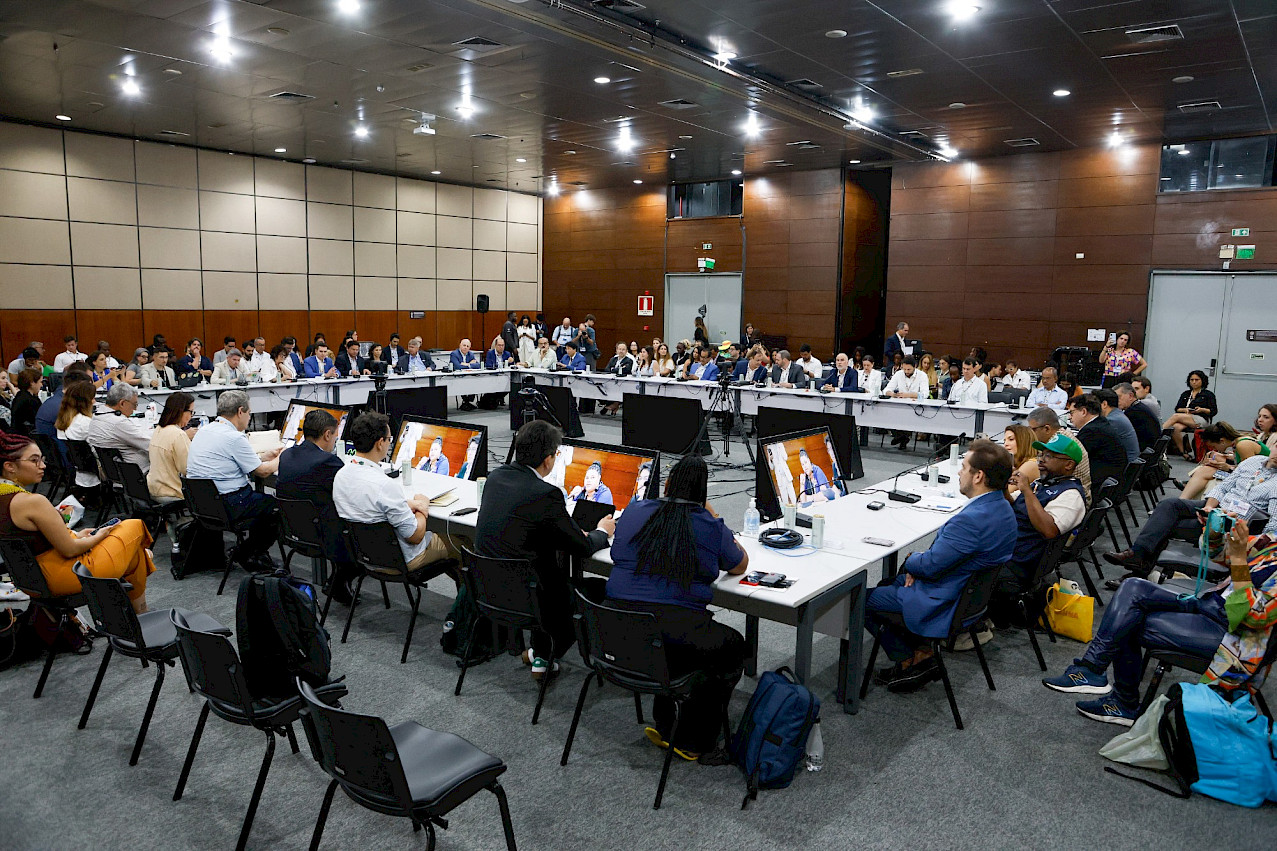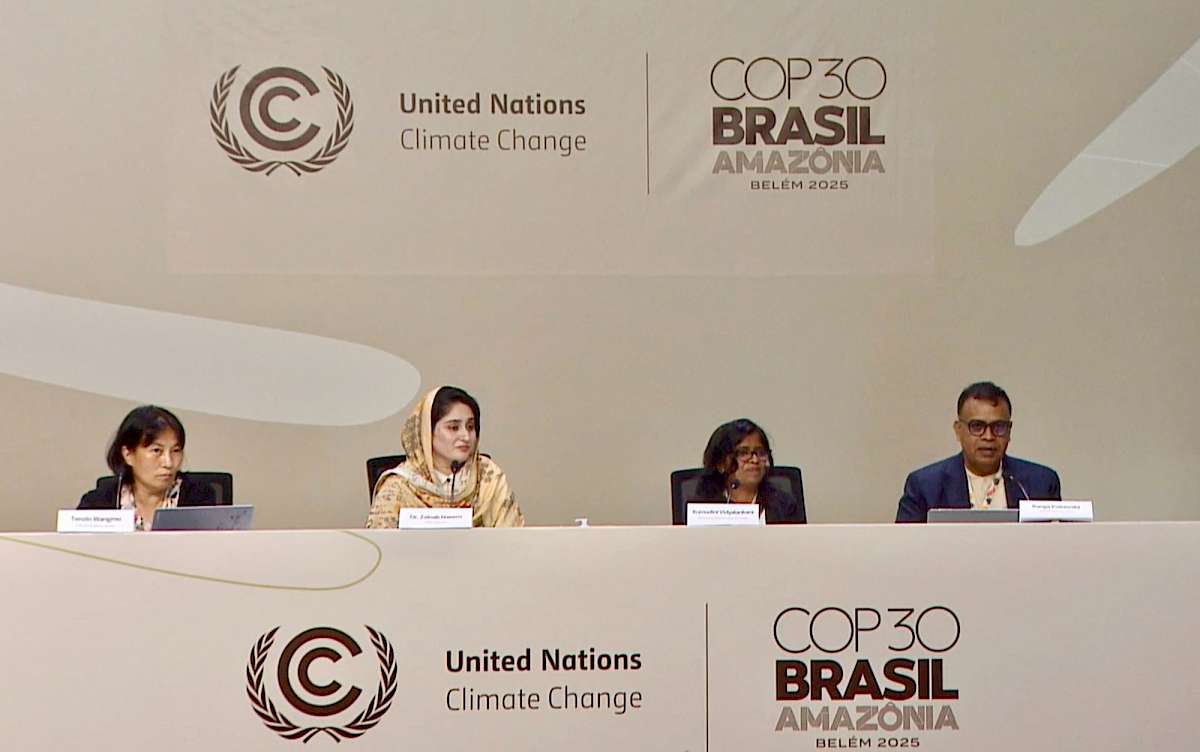
The 30th UNFCCC Conference of Parties (COP30) in Belém, Brazil, coinciding with the decade anniversary of the Paris Agreement, serves as the platform for developing the next generation of Nationally Determined Contributions (NDC 3.0). Recognizing that addressing climate change—a central pillar of the triple planetary crisis—demands systemic and integrated solutions, the critical link between resource efficiency and climate ambition has taken center stage.
The EU SWITCH-Asia Programme, dedicated to supporting the transition of countries in the Asia Pacific region toward resource-efficient, low-carbon, and circular economies, significantly strengthened its Technical Assistance (TA) work on the material-climate nexus during the first week of COP30.
A Historic Focus on Circularity
The first week of COP30 marked a significant step in global climate diplomacy with the introduction of the first-ever dedicated Circular Economy Day on November 11. This day highlighted the key role that circular economy (CE) practices—including waste prevention, reuse, repair, high-quality recycling, and thoughtful product design—play in reducing emissions.

Participants during the High-level ministerial - waste management and circular economy. (Photo: © UN Climate Change - Zô Guimarães)
Discussions throughout the week emphasized that cutting emissions requires systemic transformation, not just in energy sources, but in how materials are designed, used, and managed globally. Circular Economy was positioned as an integral part of climate action, shifting from a narrow focus on recycling to a holistic systemic framework that encompasses regeneration and innovative governance models. This recognition aligns with SWITCH-Asia's mandate to ensure CE principles are fully utilized as a key enabler for more sustainable, resilient, and ambitious climate action.
SWITCH-Asia’s Contribution to Leveraging Circular Solutions for Climate Ambition
SWITCH-Asia participated actively in multiple high-level events and dialogues in Belém, focusing on integrating Sustainable Consumption and Production (SCP) and CE into national climate strategies. The programme currently carries out three regional TAs specifically focused on integrating SCP and CE into NDCs and Long-Term Low Emission Development Strategies (LT-LEDS) in South Asia, Central Asia, and the Pacific.
Key engagements and messages delivered by SWITCH-Asia representatives during the first week of COP30
1. Global Climate Action and NDCs
A central discussion during the first week addressed how countries can move from incremental progress to decisive breakthroughs on NDC implementation. The side event “Global Deadlock or Decisive Action? Facing the NDCs Challenge Together” (held on 11 November), co-organised with CANSA, CAN Europe, CAN International and partners, focused on the systemic levers required to accelerate ambition. SWITCH-Asia contributed by bringing the circular economy perspective, highlighting how resource efficiency and material-use strategies strengthen climate action and NDC pathways. Insights drew from SWITCH-Asia’s regional work and complementary evidence from organisations such as the International Resource Panel.
2. Sectoral and Local Application of Circular Economy
The Programme highlighted the dual benefits of CE, for both climate mitigation and sustainable development, across critical sectors and governance levels through several dedicated events. These included several events during the week emphasised how CE contributes to both mitigation and sustainable development when applied across sectors and across levels of coordination.
At the Pakistan Pavilion (Industry) session, discussions centred on how CE can raise industrial climate ambition. SWITCH-Asia added evidence from its technical advisory work, illustrating practical entry points for circularity in industrial policy.
In “Cities Re-Imagined: Climate Finance Where it Matters Most” (IPE Global, INECC), CE was presented as a driver of both adaptation and mitigation, with strong implications for market transformation. SWITCH-Asia reinforced these messages, sharing regional examples where CE actions deliver cross-benefits.
At the Pakistan Pavilion (Plastics and Carbon Markets), participants discussed opportunities to embed circularity in NDCs and LT-LEDS and to leverage carbon market methodologies for plastics. SWITCH-Asia presented concrete TA examples, demonstrating how circular options can be operationalised within climate strategies.
3. Institutional Alignment
A further focus of the week was coordination among institutions supporting NDC implementation. The Interagency Coordination Meeting of Partners Supporting NDCs (UNFCCC) and the Roundtable of the Global Climate Action Partnership provided spaces for strategic alignment. SWITCH-Asia participated actively, helping ensure that circular economy approaches are consistently reflected in collaborative climate-support frameworks and emerging partnerships.
4. Highlighting SCP and Circularity at the Press Briefing
 A dedicated press briefing, “Role of Sustainable Consumption & Production and Circular Economy for Climate Action,” co-organised with Climate Action Network South Asia (CANSA), highlighted the centrality of SCP and CE for achieving global climate goals. The event aimed to raise awareness among international media and COP delegates about the role of resource efficiency and circularity in mitigation.
A dedicated press briefing, “Role of Sustainable Consumption & Production and Circular Economy for Climate Action,” co-organised with Climate Action Network South Asia (CANSA), highlighted the centrality of SCP and CE for achieving global climate goals. The event aimed to raise awareness among international media and COP delegates about the role of resource efficiency and circularity in mitigation.
SWITCH-Asia used this platform to foreground its core messages, demonstrating how its work across Asia provides actionable pathways to integrate SCP and CE into climate action.
The Way Forward: CE in NDC 3.0
As deliberations continue, COP30 provides a significant opportunity to place the missing link of resource efficiency at the forefront of the climate agenda. Encouragingly, a significant number of countries are now explicitly incorporating circular economy approaches into their NDCs. The outcomes of the first week reinforced the idea that integrated policy is key, with discussions addressing obstacles such as governmental silos and calling for more integrated, cross-ministerial governance to advance systemic circularity. SWITCH-Asia remains committed to engaging with parties and stakeholders to accelerate the adoption of CE principles as integral to effective, inclusive, and ambitious climate strategies.
Related resources
- White Papers: Integrating Sustainable Consumption and Production (SCP) and Climate Change Policy
- SCP Policies and Actions in the Pacific
- Enhancing Climate Ambition and through SCP and Circular Economy in Central Asia
Banner photo: Brazilian President Luiz Inácio Lula da Silva and UN Secretary-General António Guterres during Thematic Session 3: Ten Years on from the Paris Agreement at the Belém Climate Summit. Photo: © UN Climate Change - Kiara Worth


